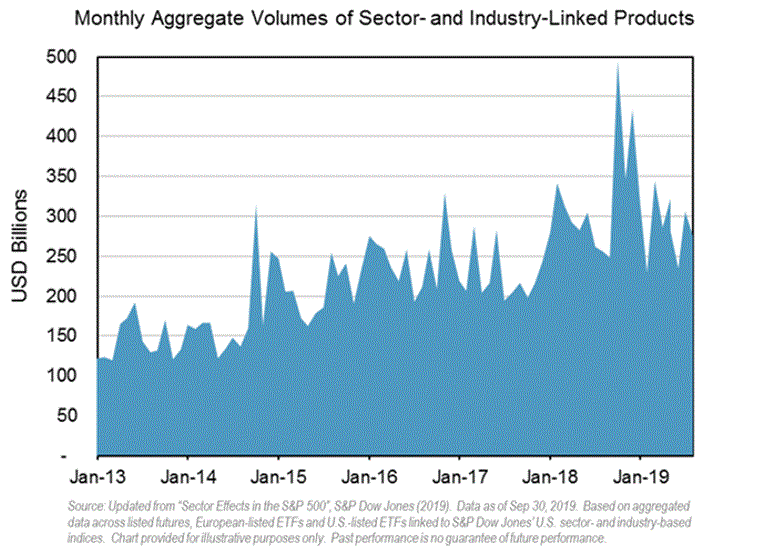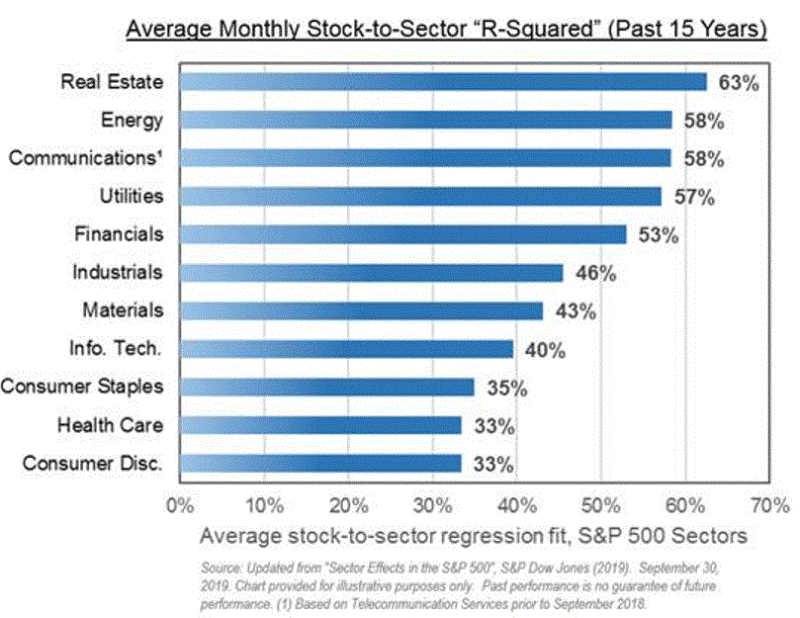
Individual securities.
By CHRIS BENNETT
It is a truth universally acknowledged that liquidity is critical to market health; typically when liquidity falls, volatility rises. The Financial Times recently cited claims that the increased use of passive investment vehicles had caused trading volumes in individual S&P 500 constituents to decline. Should we be alarmed?
In reality, the notion that single-stock traders only add liquidity, while passive vehicles only diminish it, is wrong. There are a great many active users of “passive” products, and any market-wide conclusions about liquidity require analysis not only of single stocks, but also of the ETFs and futures that track them. A wider perspective is required because the volume of trading in ETFs, futures, and other index-based exchange-traded products is substantial. Our research shows that there was an equivalent of around $127 trillion traded in products tracking the S&P 500 over the 12 months ending June 2019, while the implied average holding period across all S&P DJI index-linked exchanged traded products included in the report was 11 days.
To offer just one example that might broaden our perspective, consider how volumes in sector and industry-based products have grown over the past few years. The assets, open interest, and trading volume in futures and ETFs tracking S&P DJI’s U.S. based sector and industry products has more than doubled.

In part, this may be a simple reflection of the recently increasing importance of sectoral drivers to stocks in the S&P 500. At any rate, sectors have a long-term importance to stock returns. Around half of all the daily variations in S&P 500 single stock returns over the past 15 years may be attributed to risks shared with their sectoral peers.

Because of their current liquidity and importance to returns, sector products can be, and often are, used to make active bets in place of individual stocks. Individual stock volumes tell only part of the story, as investors may be choosing to use different vehicles to express their views. An active manager who over- or under-weights a sector makes no less a contribution to price discovery and market efficiency than a manager who over- or under-weights the sector’s components. Individual securities may currently be the road less traveled, but markets can arrive at accurate valuations from a different road.
CHRIS BENNETT is the Director of Index Investment Strategy at S&P Dow Jones Indices.
This article was first posted on the Indexology Blog and is republished here with the kind permission of S&P Dow Jones Indices.
If you want to learn more about the latest investing research; have a look at these recent articles on the subject:
What are the world’s highest fund fees?
Are passive managers really kings of Wall Street?
Active versus passive in Europe is no contest
Does active trading of passive funds pose liquidity risks?
The impact of size on large-cap fund performance










